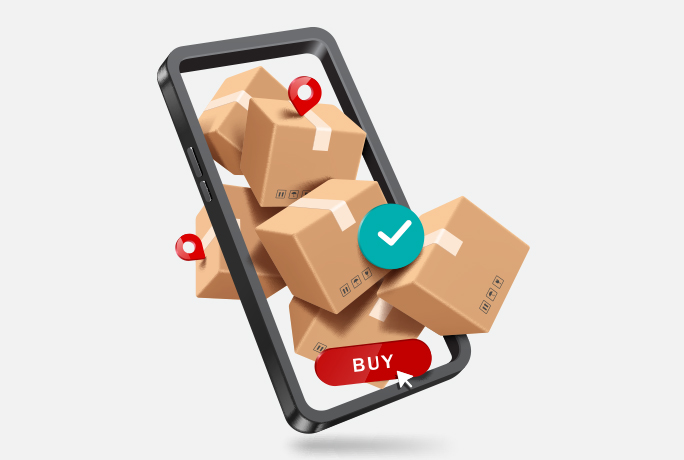
In recent years, the landscape of business has undergone a significant transformation with the rapid growth of e-commerce. Micro, Small, and Medium Enterprises (MSMEs) in India have particularly embraced this change, recognising the immense potential that online platforms offer for business expansion. The dynamic nature of e-commerce demands the use of specialized e-commerce tools to streamline operations, enhance customer experience, and drive growth. This article presents a comprehensive overview of the top 10 must-have e-commerce tools for specifically tailored for MSME businesses in India.
- E-commerce Platform: The foundation of any online business lies in the choice of the e-commerce platform. Opting for user-friendly and customisable platforms like Flipkart, Amazon India, or WooCommerce, can provide MSMEs the flexibility to design and manage their online stores effectively. These platforms offer various themes, plugins, and features that cater to different business needs and enable easy inventory management, order processing, and payment gateways integration.
- Website Analytics: Data-driven decision-making is essential for e-commerce success. Utilising analytics tools like Google Analytics helps MSMEs in India understand their website traffic, user behavior, and conversion rates. This information guides business owners to optimise their strategies, improve user experience, and identify potential areas for growth.
- Search Engine Optimisation (SEO) Tools: Ranking high on search engine results is critical for driving organic traffic to an e-commerce website. SEO tools such as SEMrush, Ahrefs, or Moz can assist MSMEs in conducting keyword research, optimizing on-page content, monitoring backlinks, and tracking the website’s search engine performance.
- Social Media Management: The power of social media in e-commerce cannot be overstated. Platforms like Facebook, Instagram, and Twitter are invaluable for building brand awareness and engaging with potential customers. Social media management tools like Hootsuite or Buffer enable MSMEs to schedule posts, manage multiple accounts, and track performance metrics.
- Email Marketing Platforms: Email marketing remains one of the most effective ways to connect with customers. MSMEs can utilise tools like Mailchimp or Brevo (formerly known as SendinBlue) to create personalised email campaigns, segment their audience, and automate marketing workflows, resulting in increased customer retention and repeat purchases.
- Customer Relationship Management (CRM) Software: Strengthening customer relationships is crucial for long-term success. CRM tools such as Salesforce or Zoho CRM allow MSMEs to manage customer interactions, track orders, and provide personalised support, enhancing overall customer satisfaction and loyalty.
- Inventory Management Systems: Efficient inventory management is a cornerstone of e-commerce success. Tools like TradeGecko or Zoho Inventory assist MSMEs in India in keeping track of stock levels, automating reorder processes, and preventing overstock or stockouts, leading to improved operational efficiency and reduced costs.
- Payment Gateways: Seamless and secure payment processing is vital for e-commerce businesses. MSMEs can integrate payment gateways like Razorpay, PayU, or Instamojo to provide customers with various payment options and ensure smooth transactions, thereby boosting consumer trust and confidence.
- Live Chat and Customer Support: Instant customer support can make a significant difference in customer satisfaction. Integrating live chat tools such as Intercom or LiveChat on their e-commerce websites enables MSMEs to offer real-time assistance, address customer concerns, and increase the likelihood of completing sales.
- Cybersecurity and Fraud Prevention: Protecting customer data and business information is paramount. MSMEs must invest in cybersecurity tools like Sucuri, Wordfence, or Norton to safeguard their websites from potential threats and ensure secure transactions, fostering trust among online shoppers.
E-commerce Growth in Indian MSMEs:
The emergence of e-commerce has presented remarkable growth opportunities for Indian MSMEs. By leveraging these must-have tools, these businesses can tap into a wider consumer base, compete on a national and even global scale, and achieve enhanced revenue streams. E-commerce allows MSMEs to transcend geographical limitations, making their products and services accessible to a vast online audience.
One of the key advantages of e-commerce for Indian MSMEs is the reduction of overhead costs associated with traditional brick-and-mortar stores. By employing these tools, businesses can streamline their operations, automate various processes, and minimize manual intervention. This results in greater operational efficiency and cost savings, which are particularly beneficial for small businesses with limited resources.
Furthermore, e-commerce tools contribute to a heightened customer experience. Online platforms enable personalized interactions, convenient shopping experiences, and quick issue resolution. CRM systems and live chat tools empower MSMEs to provide top-notch customer support, fostering customer loyalty and positive word-of-mouth referrals.
In the context of India, where digital adoption is rapidly increasing, e-commerce serves as a catalyst for MSME growth. With the tools mentioned above, businesses can tap into the nation’s burgeoning e-commerce ecosystem and capitalize on the rising trend of online shopping. Moreover, as the Indian government continues to focus on digital initiatives and technology-driven solutions, MSMEs stand to benefit from these resources, contributing to their overall competitiveness and growth trajectory.
Conclusion:
In conclusion, the realm of e-commerce presents a wealth of opportunities for Indian MSMEs, and the utilisation of essential tools is paramount for realizing success in this dynamic environment. By embracing these tools, MSMEs can not only navigate the challenges of the digital landscape but also flourish and expand their reach. As the e-commerce ecosystem in India continues to evolve, MSMEs that invest in these must-have tools position themselves for sustainable growth and prosperity in the online marketplace.








